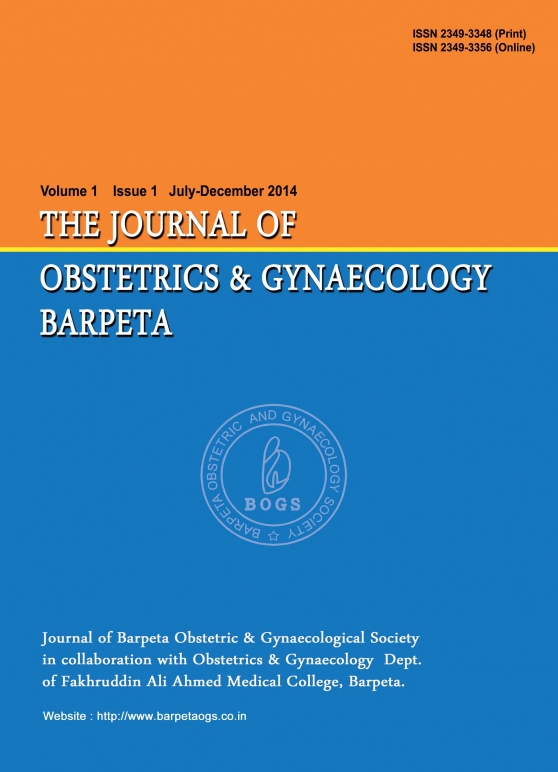
The New Indian Journal of OBGYN. 8(2):251-256
Fetomaternal trauma in instrumental deliveries - a retrospective comparative study
Nitya R,Veena KS,R Rajeswari
ABSTRACT
Objective: This study was undertaken to compare the fetomaternal trauma in forceps and vacuum deliveries. Methods: 103 forceps and 103 vacuum deliveries were considered in this retrospective study. Maternal outcome is assessed in terms of episiotomy extension, vaginal tears, cervical tears, exploration and repair under anesthesia, blood transfusion, vulval hematoma, puerperal pyrexia, and maternal mortality. Fetal outcome is assessed in terms of Apgar score, respiratory distress, birth asphyxia, meconium aspiration syndrome (MAS), necrotizing enterocolitis, hypoxic ischemic encephalopathy (HIE), hyperbilirubinemia, infection, duration of neonatal intensive unit (NICU) stay, birth injuries and infant mortality. Results: 85% of instrumental deliveries were conducted by consultants and 15% by residents. Decision to delivery interval was significantly lower in forceps compare to vacuum deliveries. Episiotomy extension and vaginal tears were significantly higher in forceps compare to vacuum. There was no significant difference in cervical tears, exploration and repair under anesthesia, blood transfusion, puerperal pyrexia, sepsis and maternal mortality. Apgar score, respiratory distress, birth asphyxia, MAS, necrotizing enterocolitis, HIE, hyperbilirubinemia, infection, duration of NICU stay and infant mortality was not significant between 2 groups. Conclusions: Vacuum delivery is associated with less maternal trauma compare to forceps delivery with no difference in neonatal outcome. Skill training for instrumental deliveries with modern education tools, simulators and hands on training for residents is need of the hour to achieve maternal and neonatal safety. Reasonable judgment in choosing cases along with skilled operators can reduce unwarranted caesareans in second stage.
Volume 1 Issue 2
Volume 2 Issue 1
Volume 2 Issue 2
Volume 3 Issue 1
Volume 3 Issue 2
Volume 4 Issue 1
Volume 4 Issue 2
Volume 5 Issue 1
Volume 5 Issue 2
Volume 6 Issue 1
Volume 6 Issue 2
Volume 7 Issue 1
Volume 7 Issue 2
Volume 8 Issue 1
Volume 8 Issue 2
Volume 9 Issue 1
Volume 9 Issue 2
Volume 10 Issue 1
Volume 10 Issue 2

